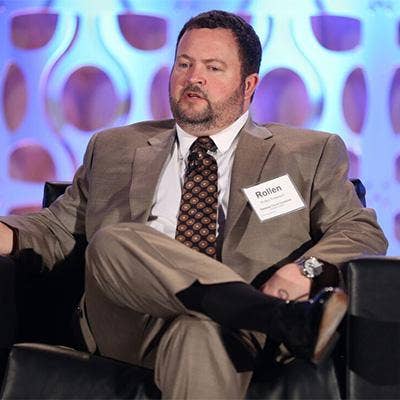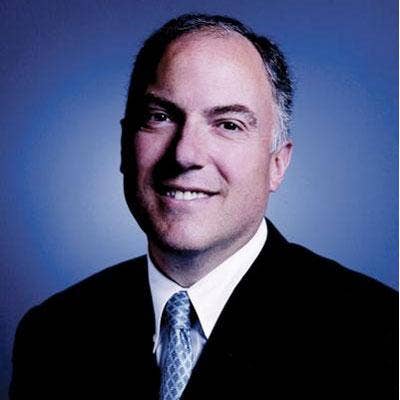Sequoia Cloud VP Sounds Off On Presidio's Strategic Service Provider Transformation And The Demise Of The Old Model

The Cloud Transformation
Rollen Roberson, vice president of consulting at Sequoia Cloud Solutions, which Presidio acquired in December, spoke with CRN at the XChange Solution Provider conference about the strategic service provider transformation taking place in the industry and at Presidio.
Sequoia Cloud Solutions is now the cloud business unit for New York-based Presidio, No. 21 on the CRN 2015 Solution Provider 500, with a charter to ensure customers derive maximum value from their cloud investments.
Sequoia, which was founded six years ago, excels at advising customers on how to best leverage public and private cloud resources to develop a scalable, secure and high-performing hybrid cloud.
"Sequoia really brought together the concept of everything soup-to-nuts cloud within four walls: concept, design, strategic advisory, the capabilities to build and integrate into the hybrid cloud," says Roberson.
The Sequoia Cloud Solutions team is conducting a national road show for all of the Presidio regions aimed at developing a team of cloud champions.

How dramatically is the strategic service provider model tearing up the old channel landscape?
It is dramatically changing. It is completely on fire right now. The old model is gone. That way of doing business is gone. I actually had a couple of reps earlier saying, 'I'm killing it out there selling more EMC XtremIO than I ever have before.' I kept telling them, 'That is fantastic but, quite frankly, that way is dead.' You are going to continue to sell product but it is not going to be in the same way anymore. Your margins are going to continuously decrease. What you are selling now is the legacy of the old world. It is winding down. You just haven't seen it yet. In order to continue that -- to make that have an increased life span -- we have got to start tacking on services.
At some point – and in fact we project – our services revenue will far outpace and far outperform our product revenue in the future. That is our plan.
We are the center of transformation for the company to help make that shift not only organizationally for Presidio but for the client base as well.

What does that business transformation consist of at Presidio?
Sequoia is bringing a brand-new set of tools and capabilities that Presidio didn’t have before. It opens up, obviously, a number of new conversations in the client base. Along with that you have to teach the existing sales teams and the solution architects what it is about. So we are bringing our perspective on cloud.

What is Sequoia doing to scale that transformational capability at Presidio?
That transformational agent is a cost. It is not a black line item on the P&L so the question is, 'How do I pay for that?' It is challenging to scale that model.
We are capitalizing on the model that Presidio has, which is very decentralized and localized. So you have a number of regions that act almost like independent companies in a lot of ways. So we are developing a core set of cloud champions within each one of the regions. We are currently on a road show now region to region, office to office, throughout all of Presidio nationally. We are getting them educated on our offerings and our capabilities. So now they are the first line of defense. They are the first line of conversation. We enable the AMs [account managers] and the solution architects. We focus it all on that cloud champion that we identify and now they are part of a more extended team that we can work with. After that it is a continuous set of enablement, month over month, quarter over quarter, driving home the messaging, the offerings and the capabilities.

Has Presidio changed the compensation to drive strategic services and business outcomes?
If you start changing that base compensation model for a lot of your legacy sales personnel, you are going to cannibalize and erode your pre-existing revenue base. It is basically kicking the feet right out from underneath you. The challenge is how do you go across that chasm and move into the services world by maintaining your current revenue stream simultaneously? In many cases what I have seen be successful is we bring in specific sales personnel that are already trained, already knowledgeable, know the sales motion for services-orientation selling, that strategic type of view, and they are compensated, incentivized around that and that leads into other areas for product pull-through.

How key are the legacy salespeople in that model?
That legacy salesperson has some key relationships. You don't want to break that. But those relationships are not at the same level whenever you are talking services sales. So you have a services salesperson that really has an overlay and connection points with many other account managers at the infrastructure layer that he connects into. He is the one binding it together into something more transformational.

What is the biggest obstacle to getting people to move to the strategic service provider model?
It is the ability of qualified people to actually help lead that charge both on the technology side, the offerings side and the sales side, trying to get the right people in the right spots that can perform that type of role. The services sales motion is so much different. It is a different animal than a product sales function. In many cases one of the bigger challenges is from the executive boardroom where, while they may recognize this type of change, they don’t take it to heart.

What are the issues with board executives that could endanger a transformation?
In many cases, they don't recognize the differences, the underlying details [between a services- and project-based engagement]. Selling a services engagement has a much longer runway. It has a much longer conversation. It might take three or four months to foster that type of services engagement only for a small project that has a very limited time frame. But that one project spawns five to 10 other projects potentially that lead to a longer revenue stream.
They are accustomed to the product revenue sale that has a much shorter return. You can get the bigger bang for the buck real quick. There is quicker satisfaction. So the executive leadership team at the company level needs to understand that change is going to take time. In many cases, they don't allocate for that time in their decision-making.

How big a transformation is going on at Presidio?
I personally see it as huge, but I think it is mainly because of the perspective and vantage point I am at because I am part of that transformational change. If you ask an engineer in one of the regions, he probably doesn't see it as readily.
As I look at all the regions collectively and how we are trying to transform this business and where we are going, it is significant. It is a big challenge, but to me that is the excitement. That is the fun. How often do we get to have such a dynamic shift in the marketplace with the technology and the vendors? We are in a great position to take a leadership role in the industry with our clients.

What is the vision of Presidio with regard to product and services?
We want both. There is no reason we can't have both. From a business model we are not out to be that high-volume, deep-discount provider of product. Sure, we want to sell product. But we want to sell it correctly. We want to sell it for the right reasons. We want to help our customers make a better choice as to why they are buying certain things and how they are using certain products. It is an equal pairing with our services side. But the service orientation – the transformation – is making that the lead role, having a services-led selling approach and conversation with customers and then you get the product pull-through on the backside with it. Now you have a very good marriage between services and product.

How quickly is services becoming the tip of the arrow in accounts?
Very quickly. Every account we are brought into from our Sequoia Cloud Solutions perspective, we are being brought in because we are the hot topic and we are specialists in the industry on how to integrate and create hybrid cloud environments. Every customer wants that conversation so no matter what client we are brought into, we very quickly establish ourselves as the strategic partner.

You talked about getting paid on business outcomes at Sequoia versus a fixed rate. How did that work?
We had a large client where some of their goals were around cost-effectiveness and efficiency and a lot of the work that we did at that time was higher-level recommendations and a strategic road map.
We actually identified significant cost reductions for them to do these efficiencies if they did it in this prescriptive way. They were skeptical. We said we will put our money where our mouth is. We are going to up-front invest in this, put this in and start changing -- but the agreement is you have to follow our implementation plan.

What were the requirements for the agreement?
They had to start working within our methodologies, processes and governance. That was the challenge for them. That is an organizational change. And this was an IT organization. IT people want to change the world. They just hate it when people change their world.
That was our proposition. We took a percentage of the savings at the end that the company recognized. And it really started to show substantial savings as a result.

What do you view as your biggest challenge in transforming Presidio?
There is pent-up demand. Obviously, the internal bandwidth for my team and myself is the issue. Every region we go into and start showcasing and talking about this, all of the account managers want us to get in front of their customers.
We can't scale to the demand that is out there today. So I've got to scale internally the capability to really make that happen. The challenge is now that I have gotten the initial attention, that initial attention only has a certain lifespan and I have got to capitalize on it while it is hot. If I am not responsive enough, if I am not working with the local account teams quick enough, they quickly revert back to what they know today.
They say, 'Well. I tried talking to you two or three times; you weren't responsive enough so I just stopped.' I was like, 'I am sorry but you are one of 700 that I am talking to.' It is the ability to scale internally to do that. It is really a pay-as-you-go model. In order for us to scale, I need new business.

What is Presidio going to look like three years from now as a result of the transformation?
It's quite a change. I think you'll see Presidio capitalizing on the strengths of its capabilities today, which is very smart people in the engineering space, very adept at bringing technologies in and making a difference for customers. The difference is now we are going to be positioned and looked upon differently. When we look at our clients and say, 'Do you know Presidio?' -- it won't be the data center guys. It will be this is the company sitting beside me in the boardroom. This is the company helping me make a difference. This is my deputy CIO. That is where Presidio is going to be in three to four years.

Talk about the economic impact of the strategic services transformation on Presidio.
The benefit to Presidio is we are looking at not only continued growth and revenue in the United States, we are looking at increasing the valuation of the company overall and I am looking to expand us globally.

What are the global plans?
Sequoia before the acquisition by Presidio was a global firm. We actually have delivery centers in India, Pakistan and Armenia where we do offshore development and quality assurance work. In fact, half of the revenue that we produced at Sequoia was from different global partners.
We are very familiar with working globally. Now that we are part of Presidio we want to bring that capability and expertise for global delivery and expand it to global partnerships, maybe implementation partners as well.
We are starting to get penetration into accounts in other countries as well just because of some of the work we are doing in the U.S. With some of the global companies we are working with they look and see what the U.S. division is doing and then the Asian and European divisions want to do that.

Will acquisitions continue to be part of the Presidio story?
I think it is going to continue to be part of the strategy moving forward. The key reasons for making an acquisition could be geographic penetration, client base, specific skill sets, etc. It is a good approach. Presidio has been good at making decisions around which acquisitions they pursue.

Talk about how the relationship developed before the acquisition.
We had been working with Presidio for four years prior to the acquisition. We built for Presidio the managed cloud platform for their managed services engagements. Out of that client relationship with what we built Presidio attained Cisco Cloud Builder of the Year and Partner of the Year. That really helped cement the relationship and it opened the door to other engagements with Presidio.
Before you know it, we were teaming and implementing in the field, developing real tight relationships. It has been a very good cultural fit. It has really been a marriage made in heaven.

Talk about Presidio CEO Bob Cagnazzi's drive to transform Presidio into a services-led company.
It's been critical. He has got a fantastic vision on where the company is headed. His leadership along with others on the board has been very critical in the direction the company is heading and, more importantly, the pace. It is very important to maintain a correct pace on the growth and maturity of an organization. They have a very good pulse on the organization so they throttle it very well. It is a very well-run organization.
I couldn't be more happy. I couldn't pick a better company to be a part of because of the position that Bob and the rest of the team has put it in.

What are your goals as you take on this strategic service provider mission at Presidio?
I have my own aspirations and goals I want to attain with Presidio. I want to take them global and make them multinational. I want to completely outshine the current product revenue and I want to overshadow that with a services-led orientation. All of that is completely possible. But the real satisfaction is being able to look back and say I have made a pivotal change in the marketplace. Presidio is in a prime position to take a leadership role within the industry overall. It's a fantastic time. You couldn't have picked a better time for this. That is why I am so happy to be part of this. All of the stars have aligned. Presidio is in a fantastic position to take that leadership role -- not to be looked upon strictly as an implementation arm. We are going to be a trend-setter. We are a going to be a leader in the industry across the board.